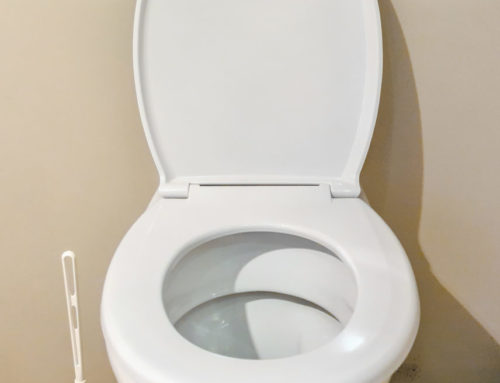Family photographs are irreplaceable.
Photographs are an incredible way to help preserve your family’s memories and create a visual family history for generations to come. Family photos represent decades of history and memories through visual aid. It would be devastating to love these keepsakes due to improper storage or wear and tear from being shuffled around your home.
If you want to preserve those memories, here’s how to store old photographs and preserve memories for future generations.
4 Rules for Storing Old Photos
1. Proper Storage Conditions
Because photographs are developed and printed on paper, ink and pigments can degrade over time if they are not stored properly. For that reason, it is essential to store photos in the right conditions if you want them to last and keep their quality for decades to come.
There are three main factors related to the conditions in which you should store old photographs: temperature, humidity, and light.
Temperature -Generally speaking, areas of lower temperatures are ideal for preserving old photographs. That’s because the cooler air slows down the degradation of both paper and ink. It also discourages insects from destroying them. That said, do your best to store old photos in a space that remains 75 degrees Fahrenheit or colder at all times. A hot attic would be a bad place to store your photos.
Sudden temperature changes are also bad for old photographs. With that in mind, using your garage for photo storage may also be a bad idea, as they often fluctuate from hot to cold. If possible, store photos and video footage in a temperature-controlled storage space.
Humidity -According to the National Archives and Records Administration, it is best to store photos and precious documents in a place that stays from 15-65% relative humidity.
That said, the biggest concern is in keeping photographs away from areas with significant levels of humidity. When stored in extremely dry environments, photos and documents can become brittle and fragile. If you store your photos in a damp basement, for example, they can grow mold and cause pictures to stick together. The moisture makes ink in the photographs run and fade. Additionally, areas of high humidity encourage more insects to infest, destroying your precious memories.
Light -Believe it or not, storing photos in a dark location does play a part in their preservation and overall quality over time. Darkness keeps the ink and pigments within the photographs from fading. Light generally breaks down images over time, particularly UV and fluorescent light.
You’ve probably seen the effects of sun damage on photographs, such as those you’ve had around your home for decades on display. They begin to lose their pigments and sun damage sets in. So, if you’d like to display your older photographs, make sure you have backup copies in storage in case the one you’re displaying starts to show signs of sun damage. We will get into how you can properly display old photographs in a minute.
2. Choosing the Right Types of Containers for your Photos
It is important to consider the types of containers you’ll be storing and organizing your photos in. The two main types of storage containers for photos include photo boxes and photo albums.
Many people purchase cheap cardboard boxes or photo albums from department stores and regret it later, as their precious photographs get ruined. Remember the self-adhesive and magnetic photo albums from decades ago? Yeah, not the best choice for saving your aging photos.
When you’re looking for photo boxes or albums, consider the quality of the containers. Ensure the containers will keep the photos safe from light, acid, and PVC.
Never store your photos under these conditions:
- Photo albums that require tape or glue to affix photos into the album or photo book
- Never mount or affix photographs to anything other than archival quality paper
- Do not use rubber bands or paper clips to hold old photographs together
- Photos should never be stored in envelopes, particularly if the envelopes are not made from archival quality paper
3. Safe Storage Location for Photographs
As previously mentioned, due to temperature and humidity imbalances, the attic and garage are bad places to store your photos. The basement is, generally speaking, no good either. You need to think about a few other factors when determining a safe place to store your photographs.
Consider insect and rodent infestations, damages from water, and other problems. Insects and rodents both love to destroy paper they find in storage, so keep your picture collection away from areas that could contain these pests.
Again, avoid areas prone to mold, flooding, leaks, and other potential dangers like these. Keep your photo storage containers off the floor so they won’t be damaged in case of a flood.
4. Do’s and Don’ts of Storing Antique Photos in Your Home:
Do: Store photos in cabinets, closets, or upper shelving. These locations are clean, dry, and climate-controlled.
Don’t: Use the attic, basement, or garage to store aging photos. These places do not have climate control and often change temperature and humidity depending on the seasons.
Do: Try your best to always store photos off the ground.
Don’t: Store your photographs near a cooling or heating vent.
How to Display Old Photographs
If you want to display your old photographs , always keep the original in a safe and properly stored area. Display copies of older photos whenever possible to preserve the memories associated with the original.
If you must display the original, it’d be a good idea to choose the right place. Choose a spot in your home that does not receive direct sunlight, fluorescent light, or UV light. The location should also be one where there is no risk for a leak, flood, or water damage, or the possibility for rodents or insects to infest it. As previously mentioned, the temperature and humidity should be controlled wherever you choose to hang old photographs. A good place to display old original photographs would be in a den or hallway.
Preparing Photos for Storage
Regardless of whether you store your old photographs in a temperature-controlled storage unit or within your home, the way you organize your pictures will make a significant difference in their preservation level and ability to be maintained.
Sealed, water-resistant containers are the most effective, as they help control moisture and insects or rodents from entering. These containers are often made out of plastic with paper dividers, or stable plastic sleeves, to separate the prints inside the storage box.
Preservation experts at the National Archives recommend using materials made primarily of pure wood pulps or cotton, as these prevent contact with acid or other detrimental elements. Additionally, they suggest rolling larger, flexible prints and documents into tubes, using a polyester film sleeve for extra precaution.
In addition to these steps, you may want to scan photos and store them digitally by using a scanner and downloading the photos to a hard drive before you take the time to store them. There are also many free photo apps you can use to safely store your print photo collection.
Digital Archival Methods
There’s also cloud storage software, which uploads thousands of photos to the internet for safekeeping in case of a fire or other disaster. You can get storage space through Google Drive or a similar program, and protect old family photos from physical destruction by saving them forever online. Unless you share them, they will only be accessible to you and other family members you add. Not to mention, digital photos are much easier to distribute than printed photos! You could even buy external hard drives or an SD card for extra physical storage, ensuring you’ll have a digital copy of any precious photograph for years to come.
Organizing Photo Storage Containers Safely
Here are a few of the ways you can safely store photo containers:
- Flat -Ensure all of your photos lie flat inside their storage containers. In addition, make sure all photo storage containers are placed on flat surfaces.
- Fill -Fill boxes to their capacity, not over capacity-Shoving too many photographs inside a storage box will damage your images. Fill boxes just to capacity, don’t overdo it.
- Fit -Fit boxes and photos correctly-Purchase photo storage containers that are the right size and fit to contain your images. If the box is too large, photos will get tossed around every time the box is bumped. If the box is too small, images will be folded and bent inside.
- Non-Acidic Dividers– Acid-free paper placed in between photographs prevent the chance of your images sticking to one another. It also helps preserve the photos from overheating, which causes ink to melt.
Conclusion
Be prepared to store your old photos professionally, preserving your family memories for generations to come just as you had always envisioned.
If you’re unsure what to do with your old photographs, consider the tips and tricks above for safely storing them. In time, the photos may become sentimentally valuable to you. In this event, you will want to be able to access them without damage.
DISCLAIMER: All materials on this site were designed for informational and educational purposes only, and are not to be taken as professional, legal, financial, or medical advice or diagnosis or treatment. InHomeCare.com is not a substitute for professional care. If you have, or suspect you may have, a health problem, you should contact your healthcare provider as soon as possible. The producers, authors, editors, and all other contributors are not liable, obligated, or responsible in any case, to any person or entity for any damage, loss, or harmful outcomes, claimed to have happened directly, or indirectly, as a consequence of materials on this website. By using this website, you agree to all the Terms of Use and our Privacy Policy. If you, or your loved one, is having a medical emergency, you should contact 911 immediately.





